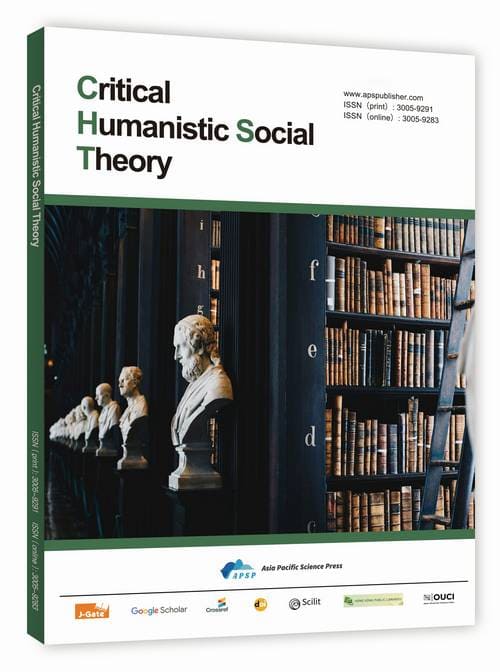From Slogans to Indicators: How Malaysian Chinese Evaluate Chinese-Style Modernization
DOI:
https://doi.org/10.62177/chst.v2i4.649Keywords:
Malaysian Chinese, Chinese-Style Modernization, Thematic AnalysisAbstract
We conducted semi-structured interviews with 18 Malaysian Chinese (aged 19–62) in Malaysia between June and September 2025. Using reflexive thematic analysis, we show how respondents translate visible material cues in logistics, digital services and manufacturing into judgments about institutional delivery, equity, green industrial upgrading, and predictability in trade, education and mobility. Media multilingualism fosters cross-checking and experience-based calibration. Rather than reproducing official categories, participants assemble pragmatic, context-dependent evaluations that hinge on the alignment between outputs and trust. We contribute an audience-side indicator logic for Chinese-style modernization and specify channels through which diaspora publics render national development narratives credible and actionable.
Downloads
References
Bodomo, A. (2010). The African trading community in Guangzhou: An emerging bridge for Africa–China relations. The China Quarterly, 203, 693–707. https://doi.org/10.1017/S0305741010000664
Hu, A., Zhou, S., & Xie, Y. (2024). Analysis of the Characteristics and Significance of Chinese-Style Modernization Road. In Study on the National Conditions of Modernization with Chinese Characteristics (pp. 3-36). Singapore: Springer Nature Singapore. https://doi.org/10.1007/978-981-97-7447-0
Keping, Y. (2010). ‘Westernization’vs.‘Sinicization’: An Ineffaceable Paradox within China’s Modernization Process. Culture and social transformations in reform era China, 153-168. https://doi.org/10.1163/ej.9789004175167.i-447.36
Yang, Y. (2023). The Path of Chinese Modernization and Its World Significance (2022). In China and the West: A Pragmatic Confucian’s View (pp. 113-138). Singapore: Springer Nature Singapore. https://doi.org/10.1007/978-981-99-1882-9_8
Yow, C. H. (2016). The Chinese Diaspora in China–Malaysia Relations: Dynamics of and Changes in Multiple Transnational ‘Scapes.’ Journal of Contemporary China, 25(102), 836–850. https://doi.org/10.1080/10670564.2016.1184896
Chang, Y. Y. (2025). A New World Order'Reframed'by China? China's BRI Narratives and EU-China Relations. Journal of Social Sciences & Philosophy, 37(1). https://doi.org/10.53106/1018189X202207101
Wanek, K. (2024). CHINA AS A PARTNER AND RIVAL? Qualitative Content Analysis Of China In Its Roles As ‘Partner’And ‘Rival’Vis-A-Vis European Strategic Autonomy (Master's thesis). https://hdl.handle.net/2077/84261
Luo, Z., & Ding, X. (2024). Chinese Modernization and the Prospects of World Modernization. World Review of Political Economy, 15(3), 446-470. https://doi.org/10.13169/worlrevipoliecon.15.3.0006
Braun, V., & Clarke, V. (2006). Using thematic analysis in psychology. Qualitative Research in Psychology, 3(2), 77–101. https://doi.org/10.1191/1478088706qp063oa
Braun, V., & Clarke, V. (2019). Reflecting on reflexive thematic analysis. Qualitative Research in Sport, Exercise and Health, 11(4), 589–597. https://doi.org/10.1080/2159676X.2019.1628806
Communist Party of China. (2022). Full text of the Report to the 20th National Congress of the Communist Party of China (English edition). https://english.www.gov.cn/2022special/20thcpccongress/
European Commission & High Representative of the Union for Foreign Affairs and Security Policy. (2019). EU–China: A strategic outlook (JOIN(2019) 5 final). https://eur-lex.europa.eu/legal-content/EN/TXT/?uri=CELEX:52019JC0005
Jin, X. (2023). Survival in competitive environments: Evidence from African migrant entrepreneurs in South China. Ethnic and Racial Studies, 46(14), 1–22. https://doi.org/10.1080/01419870.2022.2149276
Lin, L., Brown, K. B., Hall, B. J., Yu, F., Yang, J., Wang, J., Schrock, J. M., Bodomo, A. B., Yang, L., Yang, B., Nehl, E. J., Tucker, J. D., & Wong, F. Y. (2016). Overcoming barriers to health-care access: A qualitative study among African migrants in Guangzhou, China. Global Public Health, 11(9), 1135–1147. https://doi.org/10.1080/17441692.2015.1076019
Sun, J. (2025). South American perceptions and evaluations of Chinese-style modernization. World Marxism and Socialism Studies, 1–15. https://mkszyyj.ajcass.com/Admin/UploadFile/SiteContent/FJList/201605250001/2025/6//20250608125859WU_FILE_0.pdf
Guest, G., Namey, E., & Chen, M. (2020). A simple method to assess and report thematic saturation in qualitative research. PLOS ONE, 15(5), e0232076. https://doi.org/10.1371/journal.pone.0232076
Hennink, M. M., Kaiser, B. N., & Marconi, V. C. (2017). Code saturation versus meaning saturation: How many interviews are enough? Qualitative Health Research, 27(4), 591–608. https://doi.org/10.1177/1049732316665344
Malterud, K., Siersma, V. D., & Guassora, A. D. (2016). Sample size in qualitative interview studies: Guided by information power. Qualitative Health Research, 26(13), 1753–1760. https://doi.org/10.1177/1049732315617444
O’Connor, C., & Joffe, H. (2020). Intercoder reliability in qualitative research: Debates and practical guidelines. International Journal of Qualitative Methods, 19, 1–13. https://doi.org/10.1177/1609406919899220
Tong, A., Sainsbury, P., & Craig, J. (2007). Consolidated criteria for reporting qualitative research (COREQ): A 32-item checklist for interviews and focus groups. International Journal for Quality in Health Care, 19(6), 349–357. https://doi.org/10.1093/intqhc/mzm042
World Medical Association. (2013). WMA Declaration of Helsinki—Ethical principles for medical research involving human subjects. https://www.wma.net/policies-post/wma-declaration-of-helsinki-ethical-principles-for-medical-research-involving-human-subjects/
Downloads
How to Cite
Issue
Section
License
Copyright (c) 2025 Zhen Liu, Lacong Yongzhen, Tao Wang

This work is licensed under a Creative Commons Attribution-NonCommercial 4.0 International License.
DATE
Accepted: 2025-09-24
Published: 2025-10-13

















